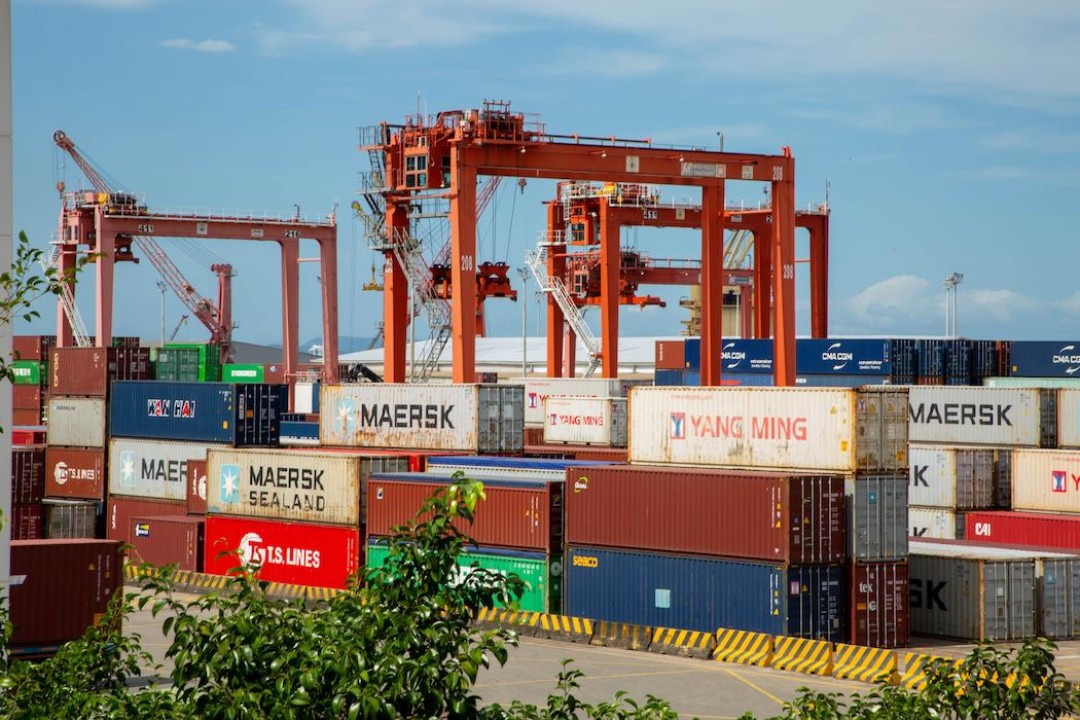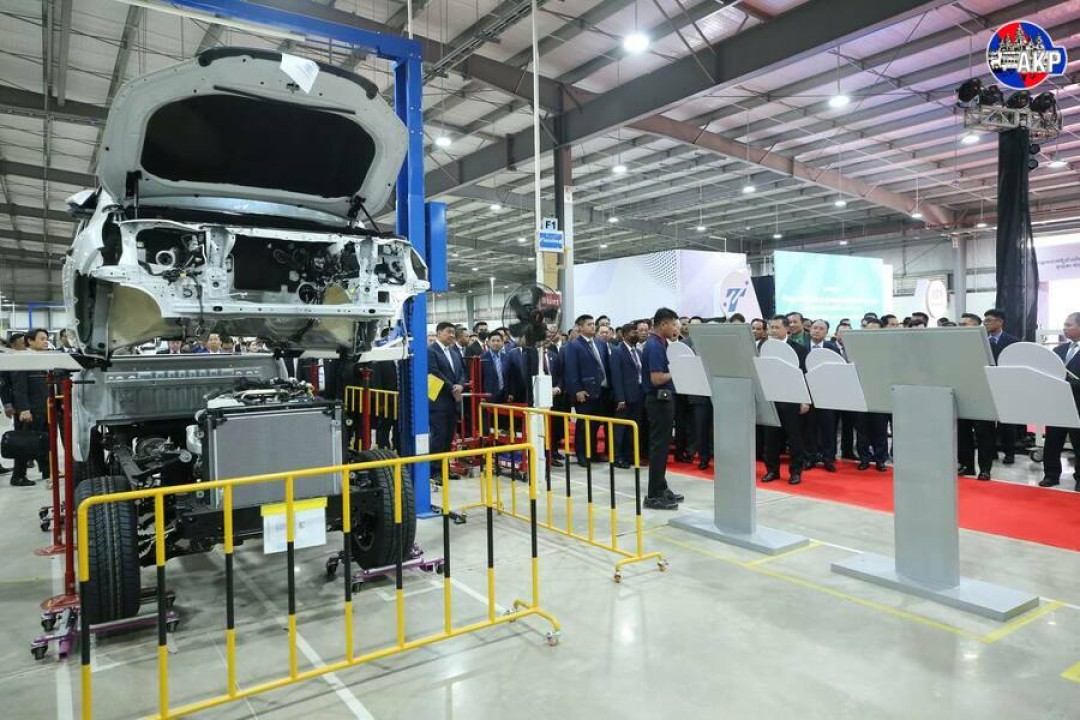What Contributed To Cambodia's Lower Tax Revenue In H1 2024?

Cambodia collected tax revenue of USD $2.9 billion in the first semester of 2024, which was lower than initially targeted. The estimate now for the whole year is expected to reach only 85.5 per cent of the objective with the decrease attributed to lower interior taxes and customs duties.
According to the Ministry of Economy and Finance (MEF) mid-year 2024 report, the Cambodian government planned to collect USD $6.4 billion (or 25.7 trillion riels) for the whole 2024 year.
However, the results from the first semester’s tax collection showed slower than anticipated progress due to reduced imports, increased local production (so less fees on imports), the implementation of regional free trade agreements, more government tax incentives for businesses, and lower income tax from the banking sector.
For the first half of 2024 (H1 2024), the combined revenue from both the General Department of Taxation (GDT) and the General Department of Customs and Excise (GDCE) reached only 46.3 per cent, or USD 2.981 billion (11.9 trillion riels), of the financial target. This has prompted a revision of the government’s estimates, indicating it will likely only collect USD $5.504 billion (22 trillion riels) this year.
Cambodia's Lower Customs Tax Revenue In 2024
The General Department of Customs and Excise (GDCE), which collects taxes on goods entering and leaving Cambodia, collected USD $1.2 billion (4.9 trillion riel) in the H1 2024, equivalent to 44.2 per cent of the financial law (the target set by the department).
The ministry noted that customs tax plays a leading role in the revenue share of Cambodia's national budget as a whole. However, three main reasons led to the decline in customs revenue:
- Reduction in imports.
- Implementation of ASEAN free trade agreements.
- An increase in domestic production, along with a reduction in vehicle imports due to the rise of vehicle assembly plants in the country.
The MEF report explained that the current low growth in revenue is also attributable to people experiencing austerity, which has led to a slow recovery in imports of commodities and a continued decline in the auto market.
“The economic development of Cambodia's manufacturing industry is growing, which makes Cambodia more capable of producing some goods that replace imports. [Additionally], the concentration of vehicle assembly in Cambodia is steadily increasing, which is changing the state revenue structure,” said the report.
Another factor leading to the loss of customs revenue is attributed to the implementation of free trade agreements within the ASEAN framework and between ASEAN and other ASEAN partners. In the first half of 2024, this loss of taxes amounted to around USD 202.8 million (or 811 billion riel).
There is also a decrease in customs revenue due to tax incentives being offered for investment projects and priority sectors, which increased by 5.8 per cent compared to the same period in 2023.
Cambodia Imports Fewer Vehicles
Vehicle imports to Cambodia were the main source of revenue collection for the GDCE, which in the past accounted for an average of 45 per cent, making it the top source of total revenue collected. This figure declined to about 31.1 per cent in 2023 and to 29.1 per cent in the first six months of 2024.
According to the report, the decline in car imports was due to several reasons, including reduced demand for cars because of the economic situation, a decline in the real estate sector, and an increasing tendency to use vehicles with smaller engine cylinders and electric cars. (However, electric cars remain underused in Cambodia due to the lack of charging stations)
Increase In Cambodian Vehicle Production Due To Tax Incentives
The government's incentives for investment projects to build factories and assemble new cars in the country includes reducing import tax rates from 50 per cent and up to 90 per cent depending on the type of assembly.
For example, Toyota Tsusho Manufacturing (Cambodia) has been granted a 90 per cent import tax deduction, and RMA (Cambodia), a Ford joint venture, has also received the same incentive.

The GDCE calculated that the import tax on a Toyota Hilux pickup, previously USD $27,690, will be reduced to about USD $2,730 when assembled locally in Cambodia. It is estimated that this concession will result in a loss of approximately USD $46 million in tax revenue for the GDCE in 2023 and approximately USD $131 million in 2024.
The MEF’s mid-year report added that in 2022, the Cambodian government also provided incentives for investment projects to assemble and install motorcycles and tricycles by lowering the tax rates on imports from 50 per cent and up to 90 per cent, depending on the type of assembly.
These incentives resulted in a loss of tax collection by the GDCE of about USD $54 million in 2023, and it could reach USD $80 million by 2024.
Through other government customs incentives for small and medium enterprises (SMEs) supporting domestic production, as well as agriculture and agro-industry, there are reductions in fees for the inspection of export and import goods.
“Overall, although these factors significantly contribute to the rehabilitation and promotion of economic growth, job creation, and improving people's livelihoods, they have also led to a significant decrease in current income, especially the tax revenue collected by the GDT and GDCE,” stated the MEF report.
Cambodia's Lower Interior Tax Revenue
The General Department of Taxation (GDT), which collects interior taxes such as income tax, salary tax, value added tax, and property tax, is reported to have collected USD $1.75 billion (7 trillion riel) or only 47.9 per cent of the financial law, which is 10.9 per cent lower than the same period in 2023.

The MEF report said the collection of GDT’s tax revenue in the first half of 2024 was lower than last year due to the sharp decline in revenue from income tax and special tax on domestic goods and services. The GDT’s significant decline was due to the sharp drop in income tax collected from the banking sector specifically, which is the main source of income tax.
GDT's Main Taxes Collection For H1 2024:
- Income tax: 54.5 per cent of total GDT’s revenue, 52.0 per cent of target collected.
- Payroll tax: 10.6 per cent of total GDT’s revenue, 46.1 per cent of target collected.
- VAT (Internal): 26 per cent of total GDT’s revenue, 45.2 per cent of target collected.
- Domestic goods/services: 7.7 per cent of total GDT’s revenue, 35.8 per cent of target collected.
Continued Tax Incentives for Businesses In Cambodia
The MEF further explained that the rationale behind this lower tax revenue are the tax incentives for the tourism industry in Siem Reap (including income tax, VAT, and tax debt) in order to revive the industry.
Other tax exemptions and incentives include:
- Continued tax exemption on stamp duty and unused land tax until the end of 2024.
- Tax incentives for the securities sector.
- Tax exemptions for extending Qualified Investment Projects (QIPs) - including income tax and certain imported products for domestic production.
- Tax incentives in agriculture (2024-2025).
- Temporary suspension of payroll tax in the garment industry.
Additionally, Cambodia’s commercial gambling sector has been favoured by the government by not fully implementing its tax obligations until the end of 2024.
It is worth noting that Cambodia’s state and private schools are exempt from paying income tax from 2024 to 2028.
Cambodia’s Continued Delay In Capital Gains Tax
Cambodia continues to delay the implementation of capital gains taxes on all six types until the end of 2024. These include the sale or transfer of immovable property, leases, investment assets, goodwill, intellectual property (IP), and foreign currencies (the tax rate on capital gains is a flat 20 per cent).
The report emphasised that capital gains tax on immovable property alone is projected to exceed USD $60 million annually under sub-national revenue, this yet excluding the other five types of capital gains tax.
Civil Servants and Workers - Minimum Wage Tax-Free
The report added that along with raising the salaries and minimum wages of civil servants and workers, the government has also regularly raised the ceiling of the monthly salary to ensure that those who receive the minimum wage are tax-free.
“In fact, raising the ceiling of the monthly salary to 1.5 million riels has reduced tax revenue by about USD $13 million per year,” the report added.
Newer Tax Revenue Streams - E-Commerce Tax
Since 2022, the GDT has also been collecting a 10 percent VAT on e-commerce transactions from overseas-resident companies such as Google, Meta, Amazon, Alibaba, Microsoft, YouTube, TikTok, Mastercard, and Netflix.
This has generated an additional USD $37 million in e-commerce value-added tax (VAT) in H1 2024, and GDT Director General Kong Vibol stated that this could be a good potential revenue source saying, “We see that this has the potential to further increase national budget revenue in the long run.”
Cambodia Mid-Year Economic Prospects 2024
Based on the mid-2024 assessment, the Cambodian economy is projected to grow by 6.0 per cent, compared to the 6.6 per cent forecast made at the time of drafting the Financial Law for 2024. This adjustment is due to two main factors:
- The change in the new fiscal year of national accounting (numerical factors).
- The lower-than-expected decline in some growth sectors, especially construction and real estate (actual economic situation factors).
The MEF will reassess the 2024 budget in September 2024 while preparing the draft law on finance for the management of 2025.